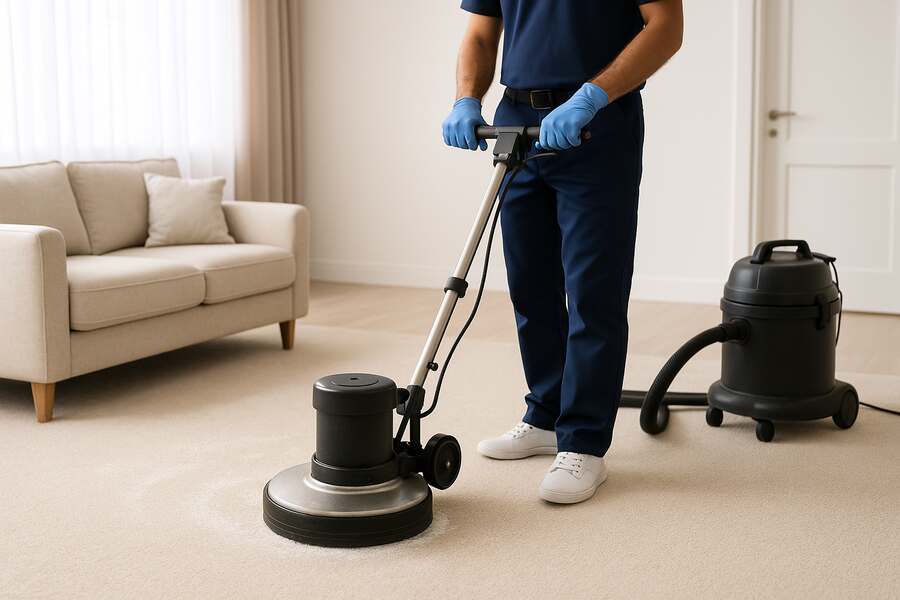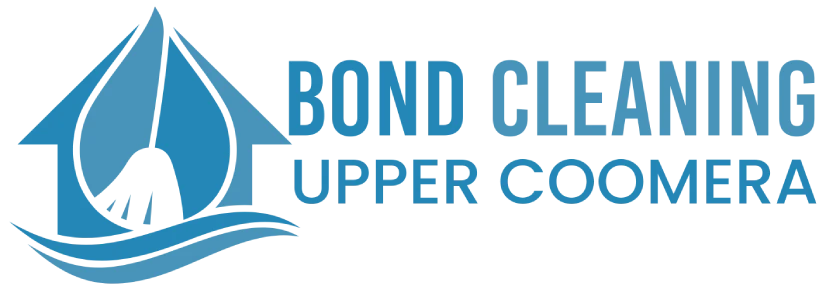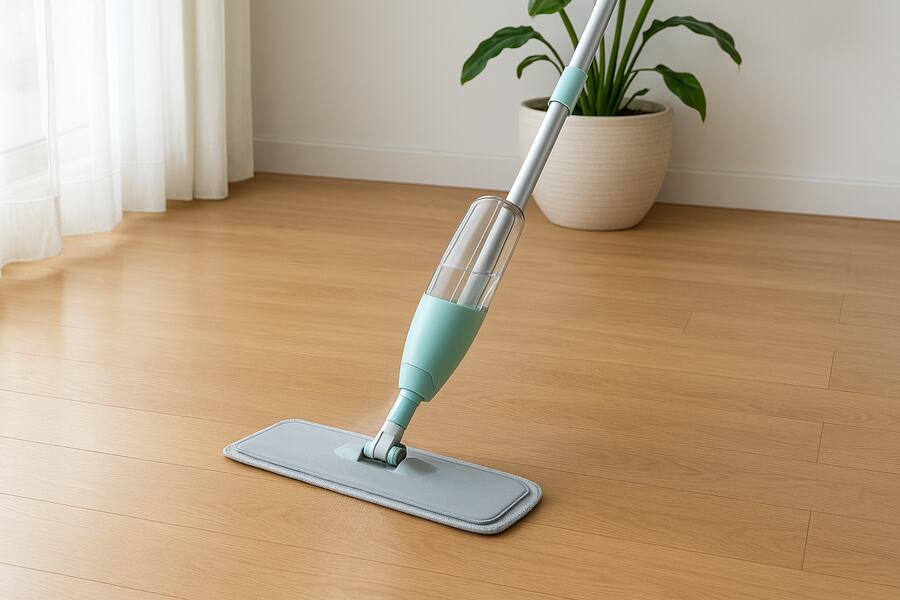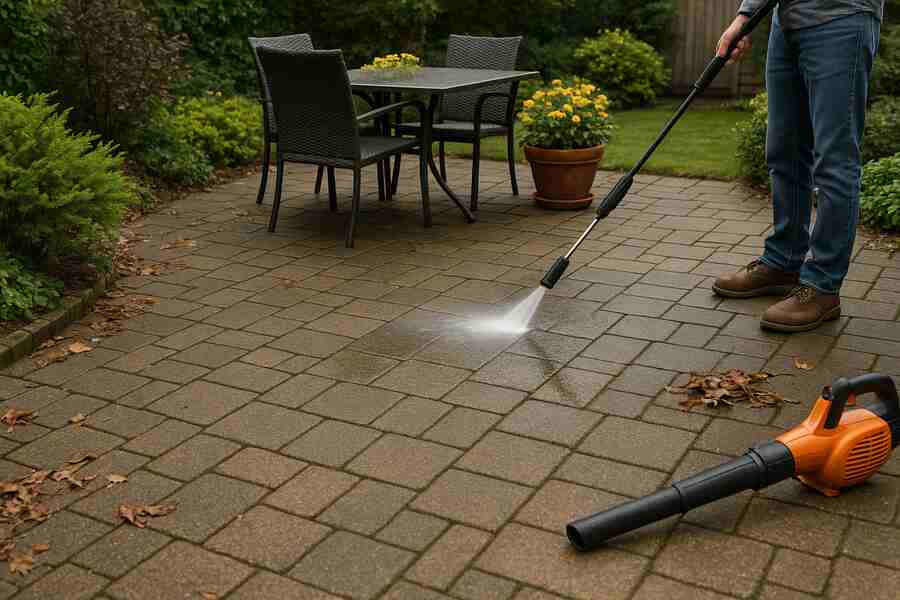Comprehensive Guide to the Dry Carpet Cleaning Process

Dry Carpet Cleaning Process: A Complete Guide
Have you ever been curious about how professional cleaners clean the carpets in a manner that is free of soaking in water? Some house owners serve to still believe that when you clean the carpets, you are left with wet, filthy floors and hours to dry up the carpets. But provided by the dry carpet cleaning, this procedure has brought a revolutionary change with a good amount of moisture and with excellent results. Its efficiency, convenience, and ability to clean even fine carpets without any damaging properties are also making it more and more popular.
It does not matter whether you want to carry out a preparation for a rental inspection or just clean up the house because you have guests coming or other people who love the idea of having a dry carpet cleaning; it is always good to know how it works. This way, you can be sure to get the best product on the market.
1. What is Dry Carpet Cleaning?
Dry carpet cleaning, as the name suggests, is a concept of cleaning carpets without much water being used. This Bond Cleaning Upper Coomera method does not have to wait days to dry the carpets and place them under air conditioning, as is the case with the traditional steam cleaning method, because unique cleaning compounds and solvents are used, which do not require much moisture. Such products help to dissolve and remove dirt and stains, thus leaving you with nearly dry carpet. This method suits best those houses which require fast cleaning or have carpets sensitive to moisture, or those who do not want to have mould and mildew in their houses. Using dry carpet cleaning, you can walk on your carpets almost instantly, unlike with other forms of cleaning that can be very inconvenient for homes and offices that are busy.
2. How is Dry Carpet Cleaning Done?
Dry carpet cleaning involves a step-by-step procedure in order to achieve deep-cleaned carpets without allowing carpets to get waterlogged. The initial stage will be to check the carpet to determine its state and any nagging stains. Furniture is tidily shifted to give access to the carpeted area in total. The cleaners will do a good vacuuming to ensure that all the loose dirt and debris are moved out of the surface so that the cleaning compound can penetrate well.
This is followed by an application of a dry cleaning compound so that the compound is spread uniformly on the carpet. This frequently biodegradable material clings to this compound and to the dirt and oils of the fibres. In order to get the compound deeply into the carpet, the professionals use steam brushes or rotary machines to loosen the fibres. The dirt being trapped by the working compound is, in turn, vacuumed, and the carpet is left with a clean and rejuvenated look and no more long-drying periods.
3. Tools and Product Employed
Professional carpet cleaning by dry methods implies the employment of special equipment and non-toxic cleaning reagents. It absorbs dirty and grim pieces using granular or powder dry clean ingredients, and residue with small amounts of water. Rotary-brush Agitation machines massage compound through carpet fibres and powerful suction vacuum up the mess and the dust swept into the carpet. In case of tough stains such as wine or pet accidents, one applies spot treatments. It is a way of cleaning which does not harm the carpet’s shade and does not shorten its life.
4. Advantages of Dry Carpet Cleaning
Dry carpet cleaning has a number of benefits over the regular wet cleaning procedures. Among the most commendable of advantages is the short drying time. Little water is used; therefore, the carpet can be used immediately after cleaning. It also does not harm sensitive fabrics like wool or silk, which can shrink or end up getting ruined with too much water on these materials.
The moisture content is also low, and therefore, the chances of growth of mould and mildew are minimal and wet carpet cleaning is an established problem. The method is very efficient in the elimination of dirt, stains and allergens without depositing soapy residues. Also, most of their compounds are biodegradable and pet and child-friendly, thus it is an environmentally friendly option in contemporary families.
5. When to Use Dry Carpet Cleaning?
When time is of the essence, dry carpet cleaning is suitable in cases involving rental inspection or a high-traffic commercial setting. It is more applicable in the case of natural fibre carpets, which shrink or are damaged by water. It blocks the moisture in arid conditions, which causes the growth of mould. The process is also effective in cleaning the surface between the deep steam cleaning, and the same process can take less drying time and a few minutes of efficient cleaning.
6. Professional Carpet vs. DIY Carpet Cleaning
A homeowner can also make an effort to make it a DIY dry carpet cleaning process via store-bought powders or rented machines, and this can be effective when the spills are not heavy. Nevertheless, professional services have better and in-depth cleaning provisions, reaching the carpet fibres with industrial loading of equipment. More mature cleaners adjust ways to match various carpets, and chemicals specific to difficult stains, and deal with intricate cleaning tasks. Although DIY is cheaper when cleaning a small household item, professional dry cleaning would give a result that will last longer.
Conclusion
Dry carpet cleaning is an enhanced, effective and safe method to maintain your carpets that does not leave the floor wet and has to be left to dry. With minimal moisture, strong vacuums, and effective new cleaning compounds, this technique is so thorough that it restores carpets, although used to remove surface dirt, but it does not remove dirt. Professional dry carpet cleaning is fast, dependable, and environmentally friendly and suitable whether doing normal house maintenance or at the end of lease.



